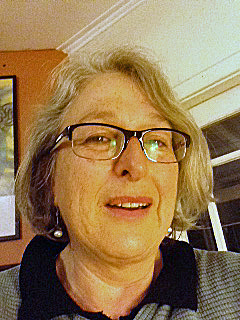Four easy steps to help GPs use the palliative care resources on CareSearch
A blog post written by Dr Christine Sanderson, Staff Specialist, Neringah Community Palliative Care Service, NSW
CareSearch is an online resource for palliative care. It has evidence-based resources for both clinicians and for patients, and their families and friends. As it is now a very large repository of evidence-based information, I would like to point you to four of the best sections for GPs to start off in.
- The GP Hub – this collection of resources provides information organised around the patient's palliative care trajectory, specifically relevant to GPs. Each topic is organised into clinically-focused 'Key Points', 'Tools and Resources' for clinicians and, where possible, 'Tools and Resources' for patients/caregivers.
The GP Hub reflects the reality of palliative care for GPs – it is more than just prescribing appropriately. As well as providing prescribing and symptom management advice, the GP Hub specifically addresses challenging topics such as psychosocial complexity and refractory symptoms, as well as clinical decision-making for the deteriorating patient, emergencies, and planning for a home death. We have collected some fantastic resources that can be printed out for patients or caregivers which help with shared decision-making, plus free full-text articles and links for clinicians requiring additional information. We also cross-link to other CareSearch evidence collections. So you can start the journey of caring for your palliative care patients with the GP Hub, and be supported throughout, with the best available information.
- The CareSearch Clinical Evidence pages – these cover physical and psychosocial symptoms; they summarise the highest level of evidence available about treating these important symptoms, and are updated regularly. Each page has a link to a PubMed search which you can use to access the most recent literature on that topic with a single click.
- The CareSearch Finding Evidence pages – this section has more PubMed searches that you can use to explore the palliative care literature. These searches have been specifically written for CareSearch and use a validated palliative care filter to help you get to the most relevant articles. In this section there is also a collection of systematic reviews on key palliative care topics. This is being continually added to, and is always a great place to start when looking for high quality information, or to gain an overview of a topic.
- The CareSearch Education pages – here you will find all the usual lists of courses and conferences, but also a whole collection of web-based education modules. You can use these to improve your knowledge about specific issues, at your own pace. Most of them are free, and many of them are excellent.
Also, take a look at what is on the website in the Patients, Carers, and Families section. The excellent information here has been written for Australian patients by local palliative care clinicians, and is carefully peer reviewed. There may be many occasions when families you are looking after can benefit from looking at CareSearch themselves, so remember to suggest it to them. There are also some multilingual audio resources on the site – so check these out as well.
So – happy CareSearching!

Dr Christine Sanderson is a Staff Specialist at Neringah Community Palliative Care Service in NSW and a Research Fellow at CareSearch, Flinders University.